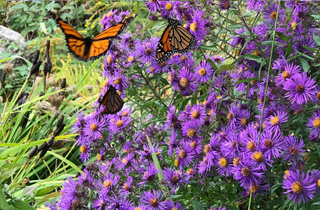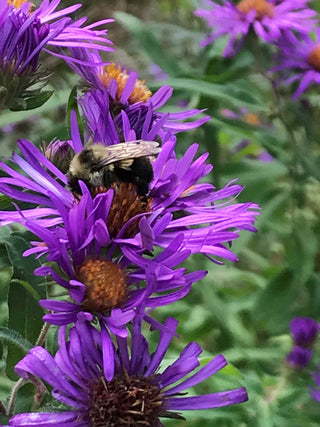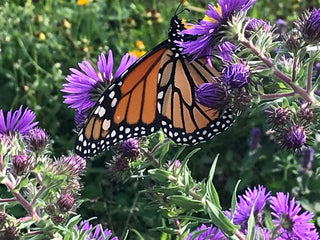New England Aster - Symphyotrichum novae-angliae
SKU: BPQ100
Regular price
- Unit price
- /per
Availability
Quantity selected exceeds current stock
Description
Phonetic: sim-fy-oh-TRY-kum NO-vee ANG-lee-a
This late blooming beauty with its purple petals and yellow centers provides an important fall nectar source for pollinators. Plant at the back of a garden border where shorter plants can cover lower leaves as they naturally begin to dry up when the plant blooms.
- Hardiness Zones: 3-7
- Native Region: BONAP Map
- BONAP Map Key Color Guide: Map Color Key
- Sun Exposure: Full, Partial
- Flower Color: Purple
- Bloom Time: August, September, October
- Soil Type: Medium - Moist
- Mature Plant Size: 3-6'H, 2-3'W
- Plant Spacing: 1-1.5'
- Host Plant: Pearl Crescent, Hoffman's Cochlid Moth, Pale Banded Dart, and Clemens Clepsis Moth,
- Attracts: Bees, Butterflies
- Advantages: Critical fall nectar source, cut flower, deer resistant, will tolerate clay soil
- Landscape Uses: Cottage gardens, moist prairies, perennial borders, rain gardens
- Companion Plants: Big Blue Stem, Black Eyed Susan, Boneset, Marsh Blazing Star, Sneezeweed, Rose Milkweed, Sweet Joe Pye Weed, Wild Bergamot
- Deer Resistant
Post
Share
Pin it
Adding product to your cart



